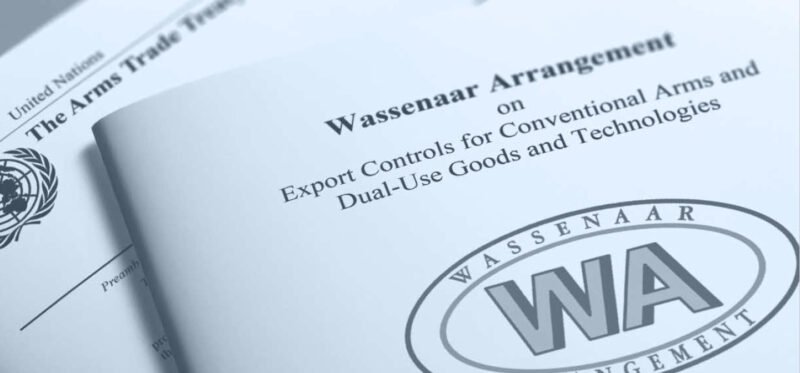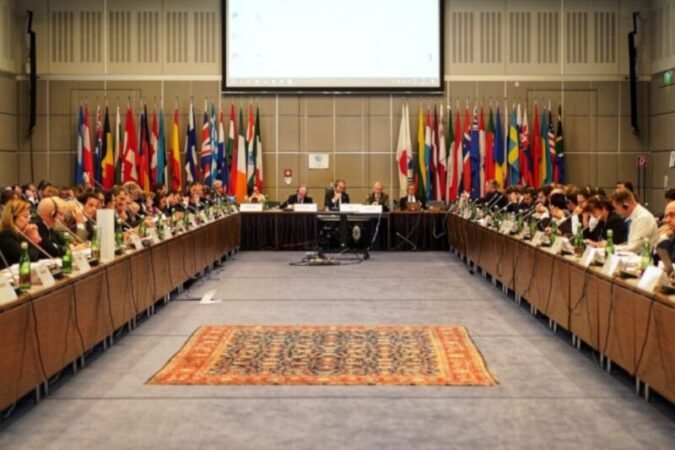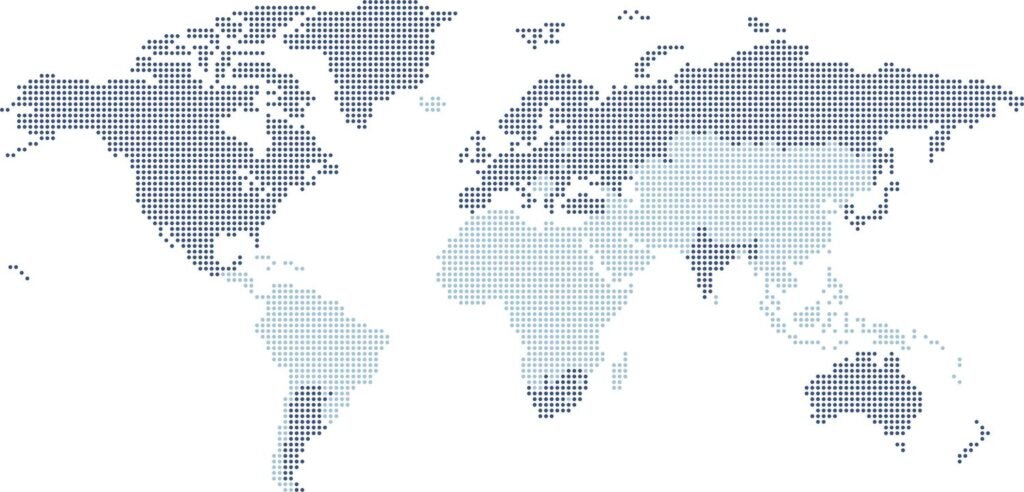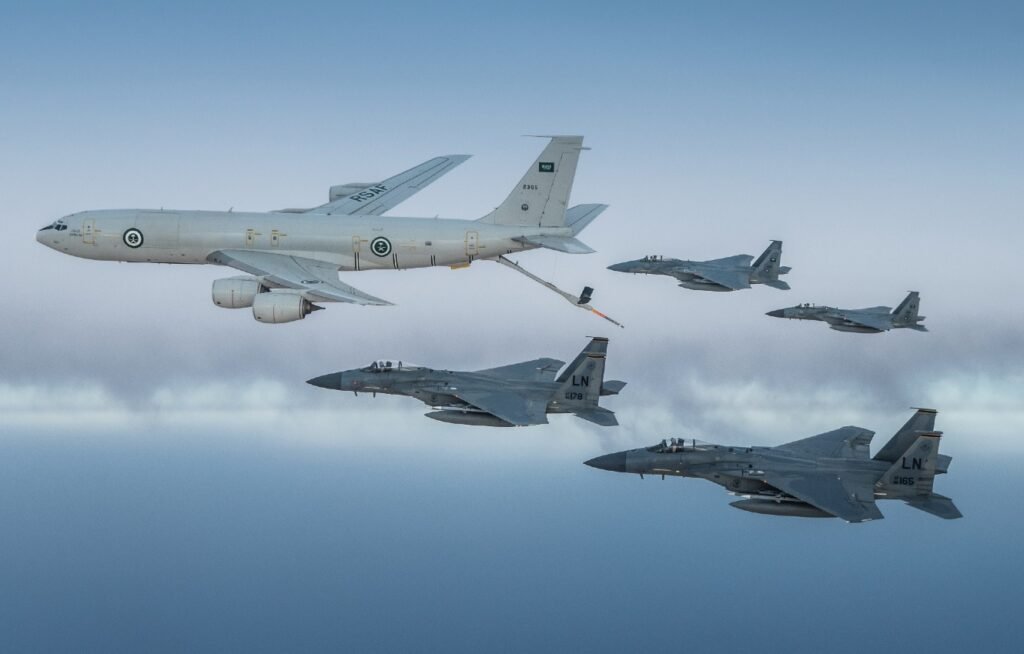Explained: The Wassenaar Arrangement on Export Controls for Conventional Arms and Dual-Use Goods and Technologies

The Wassenaar Arrangement on Export Controls for Conventional Arms and Dual-Use Goods and Technologies is a multilateral export control regime established in 1996. Its aim is to promote transparency and greater responsibility in transfers of conventional arms and dual-use goods and technologies, in order to prevent destabilizing accumulations of such items. The Arrangement has 42 participating states including many developed countries, including the European Union and the United States, and several developing countries, such as Argentina, Brazil, India, and South Africa.
Objectives
- To promote transparency and greater responsibility in transfers of conventional arms and dual-use goods and technologies, in order to prevent destabilizing accumulations of such items.
- To prevent the proliferation of weapons of mass destruction and their delivery systems, as well as to prevent the destabilizing accumulation of conventional weapons.
- To promote cooperation among member states in order to improve export controls and to prevent the illicit proliferation of conventional arms and dual-use goods and technologies.
- To promote the exchange of information among member states regarding transfers of conventional arms and dual-use goods and technologies.
- To promote the implementation of effective export controls by member states, as well as to promote compliance with relevant international agreements.
- To promote the participation of other countries in the Arrangement, in order to create a more comprehensive and effective export control regime.
- To take into account the interests of the states’ producers of conventional arms and dual-use goods and technologies.
- To consider the humanitarian, human rights and development aspects of conventional arms and dual-use goods and technologies.

Background
The origins of the arrangement can be traced back to the early 1990s when a group of like-minded countries began discussing the need for greater international cooperation on export controls in order to address emerging security challenges.
The Wassenaar Arrangement has undergone several changes and updates since its establishment in 1996. Initially, the focus of the arrangement was on export controls for conventional arms and dual-use goods and technologies. However, over time, the scope of the arrangement has expanded to include other areas such as missile technology, cyber security, and emerging technologies.
In 2011, a new element was added to the arrangement to control exports of intrusion software and IP network surveillance systems. In 2013, the arrangement was updated to include new controls on the export of certain cyber-surveillance items.
In 2016, the arrangement was updated again to include new controls on certain emerging technologies such as advanced robotics and biotechnology, as well as to strengthen the existing controls on items related to conventional arms and dual-use goods.
In 2017, the arrangement added new controls on the export of certain items related to the development of autonomous weapons.
The Wassenaar Arrangement also introduced a new format for reporting the export of controlled items in 2018, which is intended to improve transparency and consistency among participating states.

Membership
States become members of the Wassenaar Arrangement (WA) through a process of accession. Accession is the process by which a state expresses its interest in joining the WA and formally commits to implement and enforce the provisions of the arrangement.
The process of accession typically begins with a state expressing its interest in joining the WA to the Implementation Support Unit (ISU), which serves as the secretariat of the arrangement. The ISU will then provide the state with information on the WA’s goals, obligations, and decision-making processes.
Next, the state will be required to submit an accession package, which includes information on its export control system, as well as a series of undertakings committing to implement and enforce the provisions of the WA.
The accession package will then be reviewed by the ISU and the existing members of the WA. The members will assess the state’s export control system and its ability to implement and enforce the provisions of the WA.
If the state is deemed to be in compliance with the WA’s provisions, the members will approve its accession. The state will then become a full member of the WA once it has completed the necessary legal and administrative procedures.
It is worth noting that the membership of Wassenaar Arrangement is open to any state that is able to meet the criteria and that the WA operates on a voluntary basis, and that decisions are made by consensus among its members.

Export Control Guidelines
The Wassenaar Arrangement (WA) controls a wide range of weapons, military equipment, and dual-use goods and technologies. These items are grouped into three main categories:
- Conventional Arms: This category includes weapons and military equipment that are specifically designed or modified for military use. Examples of items controlled under this category include battle tanks, armoured combat vehicles, large-calibre artillery, military aircraft, unmanned aerial vehicles, military and attack helicopters, warships, and missiles or missile systems.
- Dual-Use Goods and Technologies: This category includes items that have both civilian and military uses. Examples of items controlled under this category include goods and technologies related to electronics, computer science, chemistry, biology, and nuclear engineering.
- Emerging Technologies: This category includes items that have the potential to contribute to the development of weapons of mass destruction (WMD) or their delivery systems or items that are related to cyber security, Robotics, and biotechnology.
The WA maintains two lists of items that are subject to export controls. Tier 1 list includes basic items, while the Tier 2 list includes Sensitive or Very Sensitive Technologies.
In addition, the WA also maintains a list of items related to the development of autonomous weapons. These items are subject to export controls to ensure that they are not used in the development of weapons that can operate without human intervention.
It is worth mentioning that the control lists are regularly reviewed and updated by the participating states, in order to ensure that they remain relevant and responsive to current security challenges.
How member states implement these guidelines in their own export control policies
To implement the WA’s guidelines, each member state must have an export control system in place to regulate the export of conventional arms, dual-use goods, and technologies, as well as emerging technologies. This system should include laws, regulations, and administrative procedures that are in line with the WA’s guidelines.
Member states must also establish an authority responsible for enforcing export control laws and regulations, such as a dedicated export control agency or department within the government.
The member states are also required to control exports of items specified in the WA’s control lists and to provide end-use assurances that the items will not be used for illegal or unauthorized activities. This can be done through licensing or other forms of authorization.
In addition, member states are also required to exchange information on exports and end-uses of controlled items with other participating states. This helps to improve transparency and consistency among participating states.
Each year, participating states are required to report their exports of controlled items to the Wassenaar Arrangement’s Implementation Support Unit (ISU), which then compiles and disseminates the information to all participating states.

Cooperation and Transparency
Measures taken by member states to improve export controls and prevent the illicit proliferation of conventional arms and dual-use goods and technologies
Member states of the Wassenaar Arrangement (WA) have implemented a variety of measures to improve export controls and prevent the illicit proliferation of conventional arms and dual-use goods and technologies. These measures include:
- Licensing and authorization systems: Member states have implemented licensing or other forms of authorization systems for the export of controlled items. These systems are designed to ensure that controlled items are not exported to countries or end-users that pose a risk of illicit proliferation.
- End-use controls: Member states have implemented end-use controls to ensure that controlled items are not used for illegal or unauthorized activities. This can include requiring end-use assurances from the importing country or end-user, and conducting end-use verifications to ensure that the controlled items are being used for the intended purpose.
- Brokering controls: Member states have implemented controls on arms brokering to prevent the illicit proliferation of conventional arms. This can include requiring licenses or other forms of authorization for arms brokering activities, and establishing a registration system for arms brokers.
- Catch-all controls: Member states have implemented catch-all controls to prevent the illicit proliferation of dual-use goods and technologies. This can include requiring licenses or other forms of authorization for the export of dual-use goods and technologies that are not specifically listed on the WA’s control lists, but that could be used for illegal or unauthorized activities.
- Information sharing: Member states have implemented systems for sharing information on exports and end-uses of controlled items with other participating states. This helps to improve transparency and consistency among participating states.
- Targeted sanctions: Member states have implemented targeted sanctions against individuals and entities that are involved in the illicit proliferation of conventional arms and dual-use goods and technologies.
- Export control training: Member states have implemented programs to train their customs and border officials, exporters, and other relevant stakeholders on how to effectively implement and enforce export control laws and regulations.
- International cooperation: Member states have cooperated with other countries, international organizations, and civil society to combat the illicit proliferation of conventional arms and dual-use goods and technologies.
These measures are regularly reviewed and updated by the participating states, in order to ensure that they remain relevant and responsive to current security challenges.
Transparency and information-sharing mechanisms within the Arrangement
The Wassenaar Arrangement (WA) has several transparency and information-sharing mechanisms in place to ensure that participating states have accurate and up-to-date information on the export of controlled items. These mechanisms include:
- Annual Reporting: Each year, participating states are required to report their exports of controlled items to the WA’s Implementation Support Unit (ISU). The ISU then compiles and disseminates this information to all participating states. This helps to improve transparency and consistency among participating states.
- Information Exchange: Participating states are required to exchange information on exports and end-uses of controlled items with other participating states. This includes information on the quantities, destinations, and end-uses of controlled items. This helps to ensure that participating states have accurate and up-to-date information on the export of controlled items and that they are able to make informed decisions about the export of controlled items.
- Notification: Participating states are required to notify the ISU and other participating states of any changes to their export control laws, regulations, or administrative procedures. This helps to ensure that participating states are aware of any changes that could affect the export of controlled items.
- Coordination: Participating states are required to coordinate with other participating states on issues related to the export of controlled items. This can include coordinating on the implementation of export controls, coordinating on end-use verifications, and coordinating on investigations into potential violations of export controls.
- Consultation: Participating states have the right to consult with other participating states on any matter related to the WA. This can include seeking advice on the implementation of export controls, seeking clarification on the interpretation of the WA’s guidelines, and raising concerns about potential violations of export controls.
- Regular Meetings: The WA holds regular meetings of its participating states to review and update the control lists, which specify the items and technologies that are subject to export controls under the arrangement.
These mechanisms help to ensure that participating states have accurate and up-to-date information on the export of controlled items and that they are able to make informed decisions about the export of controlled items, which in turn helps to prevent the illicit proliferation of conventional arms and dual-use goods and technologies.

Impact
Discussion of the Arrangement’s impact on regional and international security
The Wassenaar Arrangement (WA) is a multilateral export control regime that aims to promote transparency and greater responsibility in transfers of conventional arms and dual-use goods and technologies in order to prevent destabilizing accumulations. By controlling the export of these items, the WA aims to contribute to regional and international security and stability.
The WA’s control lists, which specify the items and technologies that are subject to export controls, are regularly reviewed and updated by participating states. This helps to ensure that the WA’s controls remain relevant and responsive to current security challenges. The controls are intended to prevent the illicit proliferation of conventional arms and dual-use goods and technologies, which can fuel conflict, contribute to human rights abuses, and undermine regional and international security.
The export controls implemented by the WA member states, along with the information sharing and coordination mechanisms, helps to improve transparency and consistency among participating states, which reduces the risk of destabilizing accumulations of conventional arms and dual-use goods and technologies.
By promoting greater responsibility in transfers of conventional arms and dual-use goods and technologies, the WA also helps to reduce the risk of these items falling into the wrong hands, such as terrorist groups or rogue states.
In addition, by restricting access to sensitive technologies, the WA can also contribute to the non-proliferation of weapons of mass destruction (WMD) and their delivery systems.
The Wassenaar Arrangement plays an important role in the international community’s efforts to prevent the illicit proliferation of conventional arms and dual-use goods and technologies and contributes to regional and international security and stability.
The role of the Arrangement in the context of other multilateral export control regimes
The WA operates in the context of several other regimes, including:
- The Nuclear Suppliers Group (NSG): The NSG is a group of nuclear supplier countries that seeks to prevent the proliferation of nuclear weapons through the control of exports of nuclear-related materials, equipment, and technologies.
- The Australia Group (AG): The AG is a coalition of countries that seeks to prevent the proliferation of chemical and biological weapons by controlling the export of items that could be used in the production of these weapons.
- The Missile Technology Control Regime (MTCR): The MTCR is a group of countries that seeks to prevent the proliferation of missile-related equipment and technologies that could be used for the delivery of weapons of mass destruction (WMD).
- The Proliferation Security Initiative (PSI): The PSI is a global effort to prevent the illicit proliferation of WMD, their delivery systems, and related materials by interdicting shipments at sea, in the air, or on land.
The WA works closely with these other multilateral export control regimes in order to coordinate and harmonize export control efforts. The WA’s control lists have been developed in coordination with the other regimes, and the WA’s decision-making process takes into account the guidelines and decisions of the other regimes.
The WA also cooperates with other export control regimes in order to ensure that the export controls implemented by its member states are consistent with the guidelines of the other regimes. This helps to prevent the illicit proliferation of conventional arms and dual-use goods and technologies and contributes to regional and international security and stability.

India as Chair of Wassenaar Arrangement
India joined the Wassenaar Arrangement (WA) in 2017 and became its 42nd member. The decision to appoint India for the top job was made at the 26th annual plenary of the Wassenaar Arrangement held in Vienna. During the three-day event, Ireland’s Ambassador Eoin O’Leary handed over the chairmanship to India.
India assumed the chairmanship of the WA on January 1, 2023, for a period of one year. It took over the chairmanship from Ireland. The Indian Ministry of External Affairs has stated that India is ready and committed to working closely with other members to further the WA’s goal of contributing to regional and international security and stability.


















